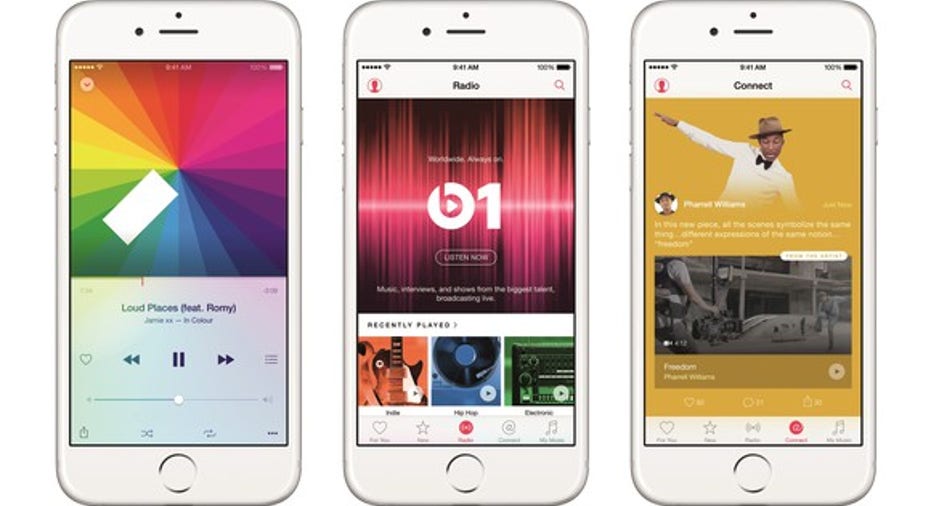Apple Inc.'s New iPhone 7 Storage Tiers Make Sense

According to a leak from Twitteruser The Malignant, Apple's (NASDAQ:AAPL) next-generation iPhone family will see an across-the-board boost in storage capacities. The entry-level model will have 32 gigabytes of storage, the mid-range one will pack 128 gigabytes of storage, and the highest-end models will come with a whopping 256 gigabytes of storage.
These new storage tiers, assuming this leak is legitimate, would represent solid upgrades from the 16/64/128 gigabyte storage tiers that the iPhone 6 and iPhone 6s families of phones came with.
More storage might seem trivial, but it's not
According to Apple CEO Tim Cook on a recent earnings call, there are three types of potential iPhone customers the company is trying to court:
- Users of non-Apple smartphones (i.e., "switchers")
- People buying their first smartphones
- People upgrading from prior-generation iPhone models
I don't think first-time smartphone buyers are going to care all that much about Apple shifting up the storage tiers; the jump from a feature phone (or no cellphone at all) to an iPhone -- even one with "just" 16 gigabytes of storage is a huge one.
As far as "switchers" go, I suspect the increased storage tiers could help to placate those potential users who have avoided iPhones because of the relatively anemic base storage offerings. It's not clear just how many such potential customers are out there, but I would imagine it's a non-zero number. So, Apple can do a better job of snatching those customers.
However, I believe the increased storage will have the most positive impact on getting users of current-generation iPhones to upgrade from their current models.
More storage for the same prices as before
Customers seem to enjoy getting "more bang for their buck," so to speak. By increasing the storage capacities at each tier, current iPhone owners may feel the new iPhones represent compelling values since they can get more storage today for the same price they paid for their previous-generation phones (or the same amount of storage for less).
I suspect those iPhone users who have 16-gigabyte devices and are feeling space-constrained will find the 32-gigabyte iPhone 7 models attractive upgrade options. Also, such customers may feel better about spending the money to upgrade, even if their current phones are otherwise performing acceptably, since those purchases can be somewhat justified out of a "need" for more storage rather than a less justifiable "want" for a new, shiny device.
The higher tiers could also potentially drive upgrades. Those buyers who bought 64-gigabyte iPhones because they couldn't/wouldn't pay for the 128 gigabyte variants last time might be excited at the opportunity to get a 128 gigabyte phone for cheaper. The 256 gigabyte models should appeal to power users who simply want a ton of local storage and are willing to pay for it.
The nice thing about what Apple is doing, here, is that it gives all buyers more storage than they would have been able to get before. At the same time, though, the jumps in between tiers are large enough that customers who value having additional storage should still feel as though they're getting their money's worth by buying up the stack.
I can't imagine, for example, that many 64-gigabyte iPhone users will downgrade to a 32 gigabyte model with their next iPhone purchase.
Potential downside?
Where I can see downside is at the very highest storage tier. 128 gigabytes of storage should be plenty for the vast majority of smartphone use cases, so the proportion of customers that go with the very highest-end storage tier may come down this generation.
That being said, given Apple needs to do everything it can to drive unit sales growth in light of the weak performance of the iPhone 6s-series devices in the marketplace, I suspect the company is more interested in delivering more value to customers (in a bid to maximize lifetime revenue for the iPhone 7 series) rather than obsessing about achieving a product mix that maximizes average selling prices.
A secret billion-dollar stock opportunity The world's biggest tech company forgot to show you something, but a few Wall Street analysts and the Fool didn't miss a beat: There's a small company that's powering their brand-new gadgets and the coming revolution in technology. And we think its stock price has nearly unlimited room to run for early, in-the-know investors! To be one of them, just click here.
Ashraf Eassa has no position in any stocks mentioned. The Motley Fool owns shares of and recommends Apple and Twitter. The Motley Fool has the following options: long January 2018 $90 calls on Apple and short January 2018 $95 calls on Apple. Try any of our Foolish newsletter services free for 30 days. We Fools may not all hold the same opinions, but we all believe that considering a diverse range of insights makes us better investors. The Motley Fool has a disclosure policy.